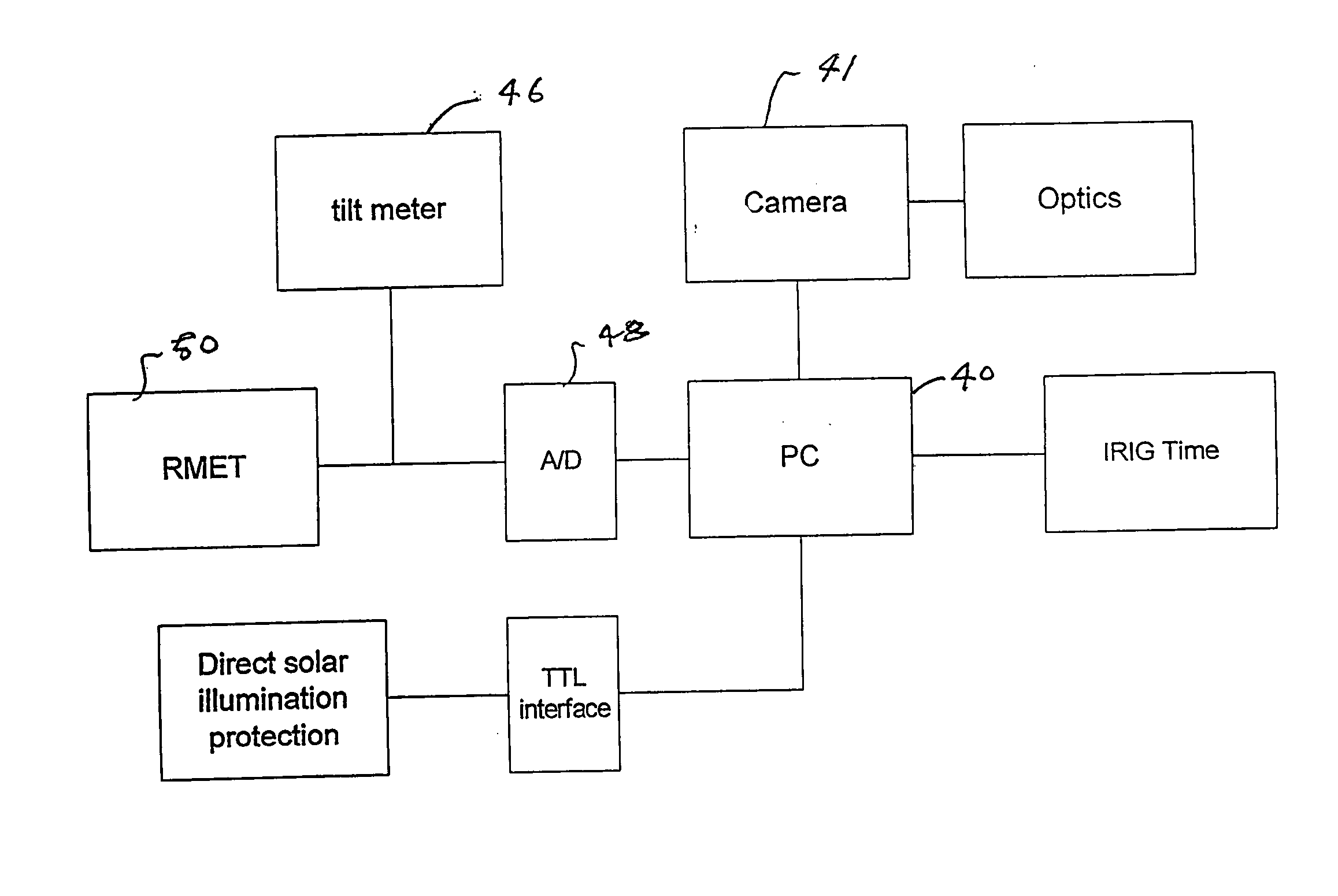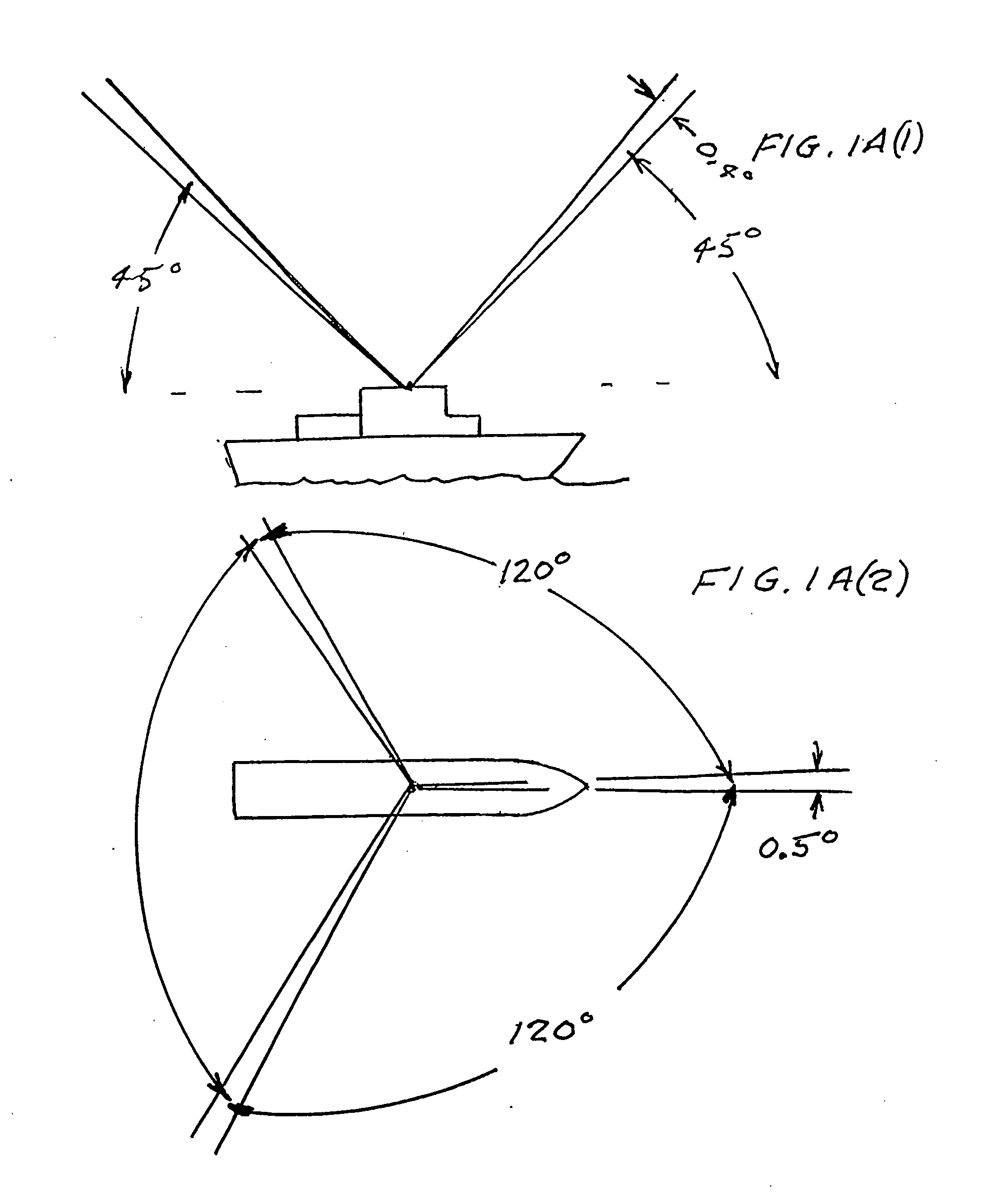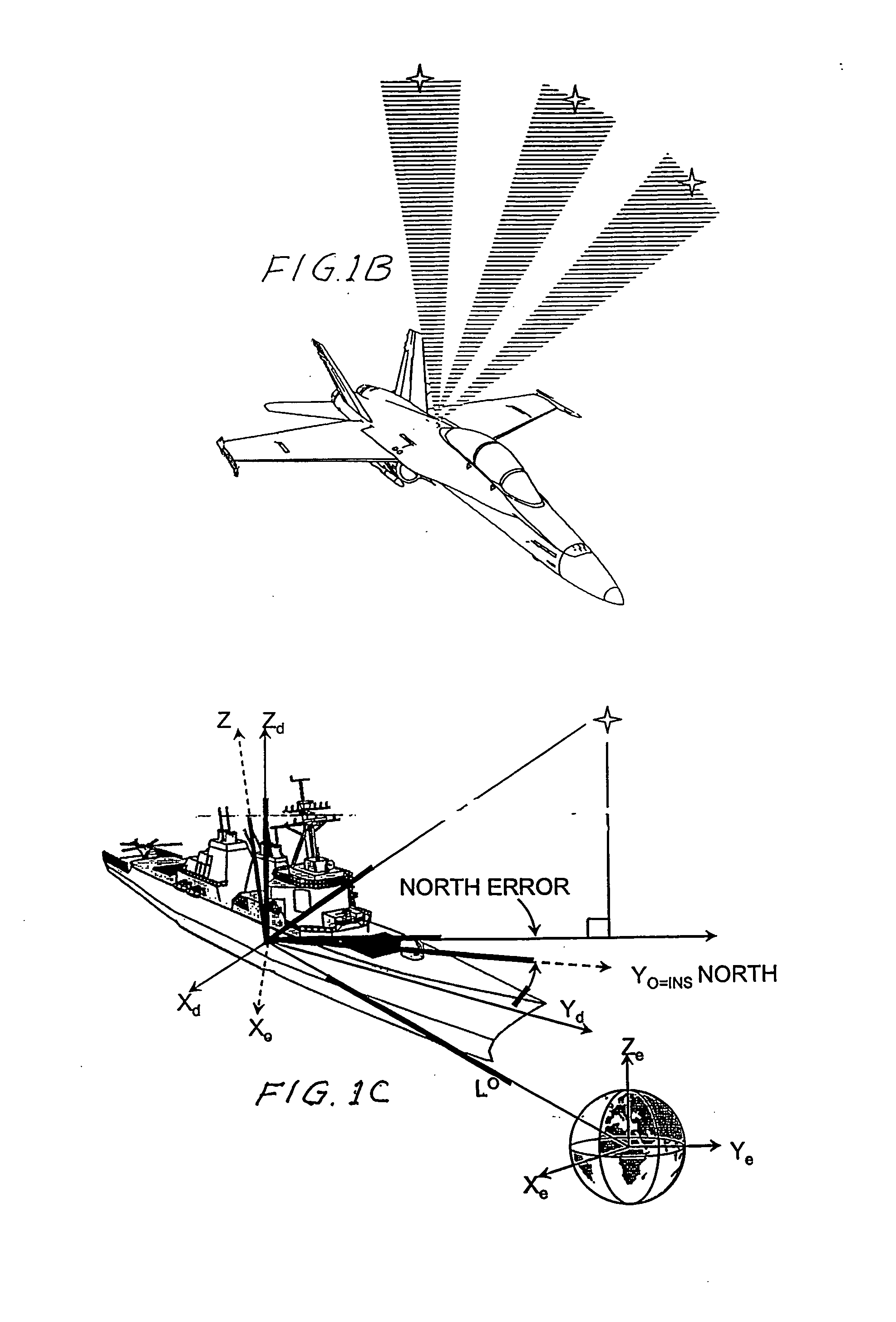Daytime stellar imager for attitude determination
a daytime stellar imager and attitude determination technology, applied in the field of daytime stellar imagers, can solve the problems of large and heavy embodiments in the first set, and achieve the effects of reducing the number of received star photons, and reducing the signal-to-noise ratio (snr)
- Summary
- Abstract
- Description
- Claims
- Application Information
AI Technical Summary
Benefits of technology
Problems solved by technology
Method used
Image
Examples
first compact embodiment
[0128] The first compact embodiment of the present invention uses a single telescope equipped with a two-axis high precision rotary stage to point the field of view at a selected bright infrared star within a search window. It also includes a temporary mirror which turns the telescope field of view by 90°. The latter is necessary because a geographical position determination requires that the star measurements be separated by an angular distance of between 90° and 120° in azimuth.
[0129] This design concept is shown in FIG. 17. When a temporary mirror 50 is inserted into the optical train, the field of view is deflected by 90°. A small telescope 52, nominally 5 cm aperture, points toward a mirror 54 mounted onto a precision stage 56 that has a 7.5° rotation capability, for example, the ARA125 from Aerotech, Inc. This rotary stage has an absolute accuracy of 1 arc-second. The telescope is fitted with an infrared camera to view stars within a field of view of nominally 0.44°×0.4°. The...
second compact embodiment
[0131] The second compact embodiment of the present invention uses two identical telescopes mounted to a dual-axis precision rotary stage. In the design shown in FIG. 18, the two telescopes 60 and 62 are pointed at 90° with respect to each other, sharing a common focal plane. Small fold mirrors near the focal plane, not shown, are used to combine the fields of view onto one infrared camera. An alternate design would add a 45° fold mirror at the output of one of the telescopes, so that the two telescope bodies are essentially parallel, and the different fields of view are provided by the 45° fold mirror. A single infrared camera is used for both telescopes. Two approaches for combining two images in a single focal plane array have been described above and shown in FIG. 5B. This design also includes two temporary fold mirrors that can be inserted at a precise angle. These temporary mirrors increase the sky coverage for the cases where the solar angle is too close to the original direc...
PUM
 Login to View More
Login to View More Abstract
Description
Claims
Application Information
 Login to View More
Login to View More - R&D
- Intellectual Property
- Life Sciences
- Materials
- Tech Scout
- Unparalleled Data Quality
- Higher Quality Content
- 60% Fewer Hallucinations
Browse by: Latest US Patents, China's latest patents, Technical Efficacy Thesaurus, Application Domain, Technology Topic, Popular Technical Reports.
© 2025 PatSnap. All rights reserved.Legal|Privacy policy|Modern Slavery Act Transparency Statement|Sitemap|About US| Contact US: help@patsnap.com



